10 True Stories That Prove Kindness Is Quiet — but Stands Strong

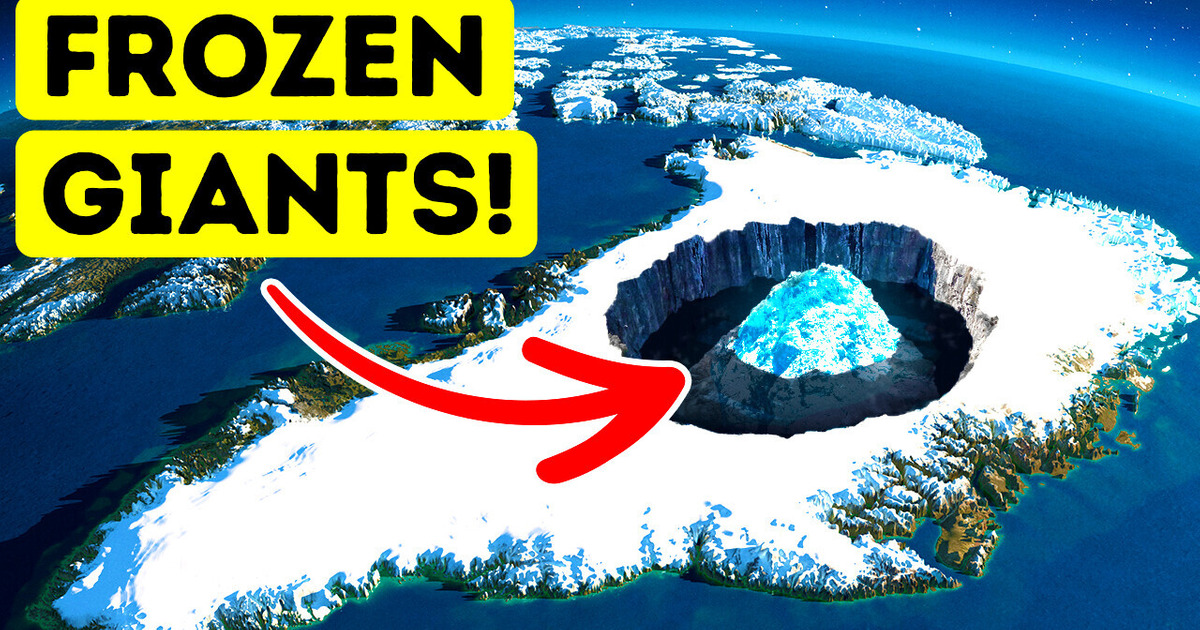
Discovering hidden places on our planet is extremely exciting! Today, I’m taking you on a trip you aren’t going to forget anytime soon. But suit up! This is about to get very cold.
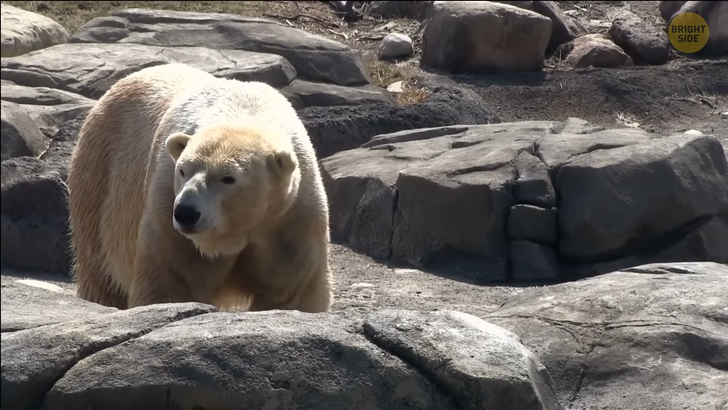
You hop on a plane and land on the ice-covered island of Greenland. An unbelievable view of the Aurora Borealis, aka the northern lights, is greeting you. You can’t believe your eyes! Your guide tells you how rare this phenomenon is. Usually, people spend days trying to hunt it down.
You feel lucky and take your time to appreciate these beautiful dancing greenish lights. You’re glad you have brought that camera along, aren’t you? Between clicks, you learn that the Aurora Borealis is the result of some rather rough events. This spectacular light show occurs when high-energy particles from the Sun slam into Earth’s upper atmosphere.
On day two, you continue to explore the place by air. This may not come as a surprise, but Greenland is one of the world’s largest islands. This time, on board a helicopter, you can see the infinite icy landscape. In case you’re curious, you are now flying over 656,000 sq. miles of thick ice.
Oh! What is it down there? It looks like a family of polar bears! You don’t want to get too close, of course. The conditions in Greenland may be too tough for people to live there, but some animal species do very well in this land of ice. Those are reindeer, wolves, and arctic foxes.
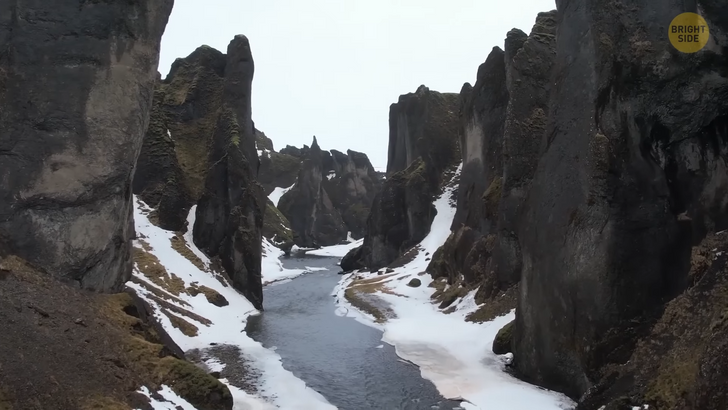
On your way to Greenland, you probably made a pit stop in Copenhagen. Denmark is one of the few countries that have commercial flights to Greenland. You didn’t know this before, but you find out that the island is actually part of the Kingdom of Denmark. On a map, it’s right between the Arctic and Atlantic oceans. You’re lucky you have a local pilot that tells you about the secrets hidden in this scenery.
Under this 2-mile-thick white surface, there’s an entirely different world. A world filled with canyons, meteor-carved craters, and millennia-old plant fossils. You are beyond excited to go visit each of these spots. But of course, you’ll have to use your imagination, as all of it is hidden under the ice. Believe it or not, nearly 80% of the island’s surface is covered with it.
The first stop on your tour is Greenland’s Grand Canyon. You land not far from it, somewhere in the northern part of the island. You may know that canyons are deep, narrow valleys with steep sides. But I bet you didn’t know that the word canyon actually comes from the Spanish word cañon, which means “tube” or “pipe.” Now, this Grand Canyon has some similarities with the one in the US.
First of all, in size. It’s at least 460 miles long and up to 2,600 feet deep in some places. There’s a true subglacial valley down there. And if you’re wondering how this happened.... Well, the canyon had probably been formed by a river that had been flowing through Greenland before the ice took over.
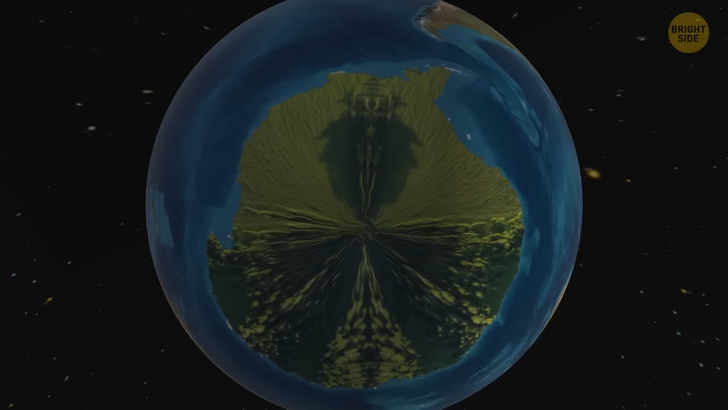
Oh, yes. Greenland hasn’t always been covered with ice. It was once green — no pun intended! Many other icy places on Earth, such as Antarctica, were once covered in greenery. Scientists have figured out that in the past, Greenland was mostly ice-free. With the help of airborne radar, they made amazing discoveries. (By the way, ice is invisible to radar technology!
If you have trouble believing it, try putting an ice cube inside your microwave. It won’t melt or heat up!) A recent discovery of fossilized plants allowed researchers to estimate that Greenland used to be much warmer than they could imagine! 2021 research conducted by the University of Vermont found fossils of twigs and leaves, which left researchers very confused. They expected to discover sand and rocks in the deepest layer of ice. But instead, they found some clear proof of rich flora!
Judging by what you’ve seen of the landscape, it’s hard to believe that forests were once growing here. Today, you’ll find some tundra vegetation on the coastal part of the island. And that’s pretty much it. But according to the genetic material found in these fossilized plants, researchers believe the island used to be much greener. It’s very likely that there were insect-filled forests with butterflies and beetles flying around. And the average temperature on the island varied from 50˚F in the summer to 1˚F in the winter. NASA’s Operation IceBridge has flown over Greenland more than 100 times.
This has allowed researchers to create 3D maps of the island and figure out the age of each layer of ice in Greenland’s Ice Sheet. Ice sheets can help answer many scientific questions as they form over the span of thousands of years. They’re layers of snow on top of more snow. The snow gets compacted into ice, which, in turn, creates what we call an ice sheet. Remember those fossils we were talking about? They are believed to be from the Eemian period, which was 130,000 to 115,000 years ago.
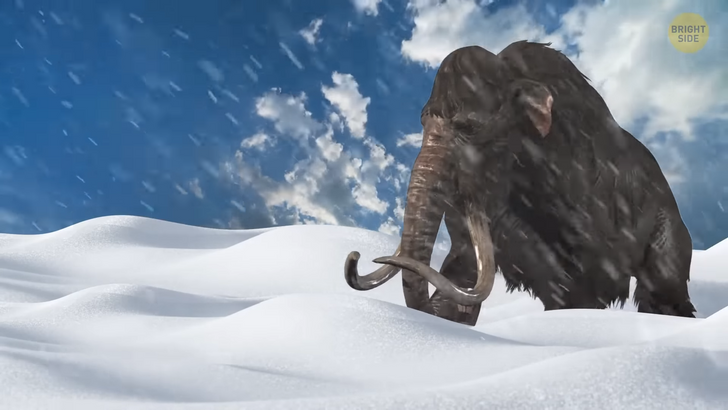
According to the groundbreaking 3D footage from NASA, we can see three distinct climate periods within the ice sheet. The uppermost layer is quite flat and uniform. If you decided to dig deeper, you’d find the layer formed during the last Ice Age. It’s more complex and rugged. The ice there is darker than what you see on the surface.
If you let your mind wander, you can picture what this part of the world looked like when mammoths were roaming around. If you kept digging, you’d eventually find leftover ice from the Eemian period I’ve told you about. Now, canyons aren’t the only unusual thing found under the ice! If you could sneak a peek under all those layers of snow, you’d see an impressive mountain range and also plunging fjords!
In 2017, scientists created a map that showed what Greenland had looked like without all that ice. There was a bowl-like depression in the middle of the enormous island. This depression was most likely an ancient lake. Around it, there was a circle of coastal mountain ranges. This scenery probably resembled the landscapes of modern Patagonia. Big mountains with snowy tops, surrounding crystalline lakes.
This ancient lake in Greenland is a wonder on its own. Imagine a pit the size of Rhode Island and Delaware put together! The lake is believed to have covered over 2,700 square miles, and back in the day, it was fed by at least 18 different streams. These crystalline blue waters were surely very inviting! And freezing, of course. But if you ended up going for a swim, I’d say be careful! As the water could get up to 800 feet deep in some places.
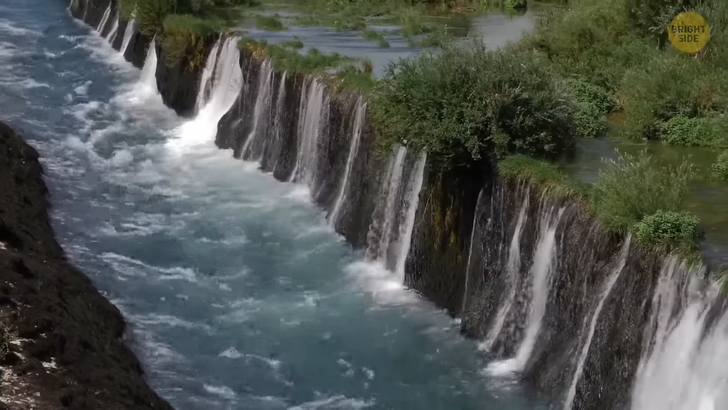
On day three of your adventure, you discover a true under-ice water park! While you’re wandering around the ice-covered island, your guide tells you to be mindful of the cracks in the surface. These cracks are responsible for the modern-day “aqua lounge” going on down there. Meltwater and rainwater flow down the cracks in the ice all the way down to the riverbeds. This forms a landscape of jewel-like lakes and streams filled with crystalline water.
Researchers estimate that about 60 small under-ice lakes exist there. And yes, they’re actual lakes! Perhaps one of the most impressive hidden features on this island is a meteor crater! Under the Hiawatha glacier, you can find a 19-mile-wide impact crater, big enough to swallow the city of Washington! Apparently, a mile-wide iron asteroid struck Earth’s atmosphere within the past 100,000 years and chose Greenland as its landing point. If anyone had been around to see it, they’d have witnessed a real show — a white glowing fireball cutting through the sky!
Scientists speculate that if it landed on an ice sheet, it certainly vaporized both water and stone. Someone standing hundreds of miles from the impact site would have heard a deafening thunderclap and experienced hurricane-force winds. But it actually makes sense. The approximate speed of meteors entering Earth’s atmosphere is 45,000 mph. For comparison, that is two and half times the speed of a spaceship! It’s bound to make some noise and leave a huge crater in the ground!











